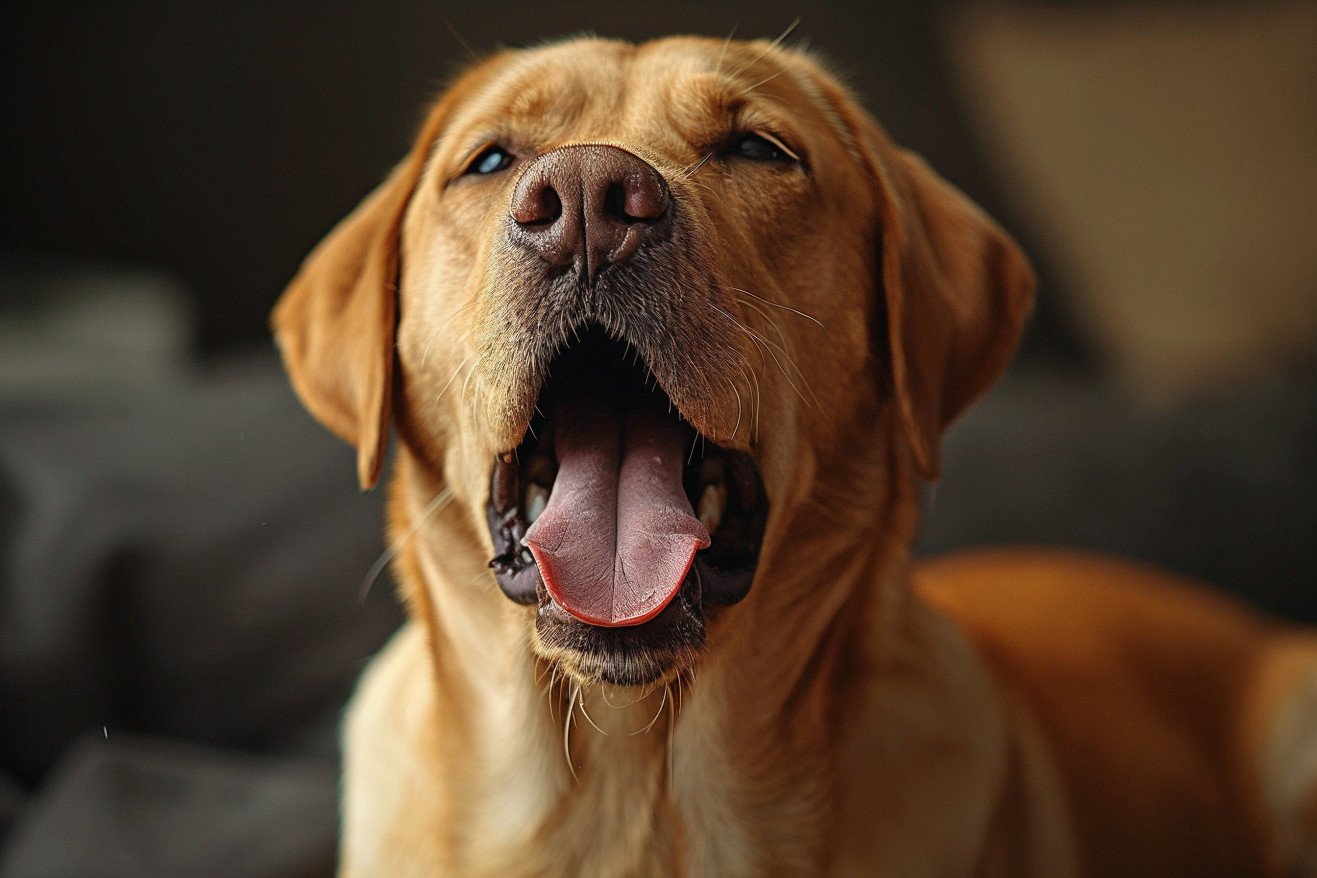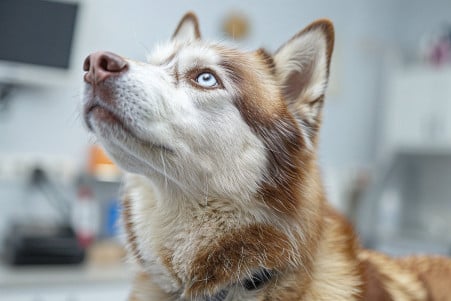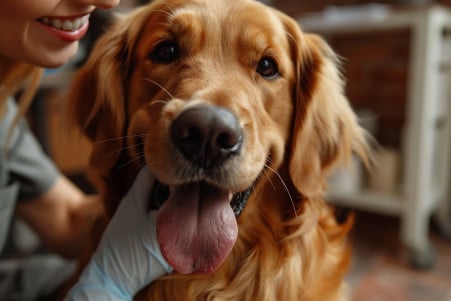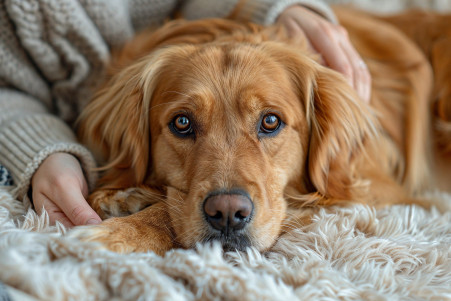Do Dogs Have Uvulas? Exploring the Canine Oral Anatomy
16 May 2024 • Updated 14 May 2024

Do dogs have those fleshy, dangling uvulas at the back of their throats like humans do? Let's explore the unique anatomy of a dog's oral cavity. Unlike humans, dogs do not have uvulas hanging down at the back of their throats. A dog's soft palate is smooth and streamlined without the uvula protrusion, which facilitates panting and regulates airflow when breathing through an open mouth.
To gain a deeper understanding of a dog's lack of uvula, we'll dive into veterinary anatomical studies and research comparing the physiological differences between canine and human oral structures. This exploration will shed light on the evolutionary reasons behind this anatomical variation, as well as the distinct respiratory adaptations canines possess to accommodate their physical capabilities and lifestyles.
Do dogs have uvulas?
Anatomical Differences: The Canine Soft Palate vs. Human Uvula
The anatomy of a dog's soft palate is quite different from that of the human uvula. While the human uvula is a fleshy, teardrop-shaped mass that hangs down from the soft palate at the back of the mouth, dogs do not have a uvula. Instead, the dog's soft palate is described as "smooth and flat," in a study that looked at the microanatomy of the canine soft palate in mesaticephalic breeds.
This study found that the dog's soft palate is made up of a central musculo-connective axis that includes salivary glands and is covered by mucosal linings on both the nasopharyngeal and oral sides. The palatinus muscle, which would be the equivalent of the human uvula, is made up of small, rounded fibers, while the other muscles of the soft palate, including the levator veli palatini and palatopharyngeus, are made up of larger, more loosely organized fibers, according to another study that compared the palatine musculature of dogs to that of humans and horses.
The streamlined nature of the canine soft palate makes it more effective at panting and regulating the flow of air than the human uvula, which is better adapted for speech. In fact, one study notes that the human uvula, with its mix of serous and seromucous glands, is a complex structure that can produce large amounts of saliva to support speech. In contrast, the absence of a uvula in dogs likely has a different impact on swallowing and breathing, making it easier for them to pant and breathe with their mouths open.
Evolutionary Adaptations: Why Dogs Don't Need Uvulas
The lack of a uvula in dogs is not just a fluke of anatomy but an evolutionary adaptation that reflects their unique ways of communicating and living. According to a study on dog anatomy, dogs don't need a uvula because they communicate through body language and scent rather than speech.
The absence of a uvula in dogs is an example of the streamlined soft palate that allows for more efficient panting and open-mouth breathing. This is important for regulating temperature and airflow. As research notes, the lack of a uvula in dogs seems to have no negative impact since their strong, muscular esophagus and evolved swallowing mechanisms mean they don't need a uvula to eat and drink.
In other words, the dog's respiratory system has evolved to work just fine without a uvula. The smooth, unobstructed soft palate is necessary for the unimpeded airflow that's needed for panting, which dogs use to cool themselves. This evolutionary adaptation, as described in a comparative study of mammalian soft palates, shows the unique physiological needs of dogs compared to humans and other animals.
Brachycephalic Breeds and Airway Issues
Brachycephalic dogs, or dogs with short skulls and noses, are prone to a condition called brachycephalic airway obstructive syndrome (BAOS) due to their unique anatomy. VCA Animal Hospitals explains that one of the primary causes of BAOS is an elongated soft palate. In brachycephalic breeds, the soft palate is longer than the space in the skull, which causes it to extend into the opening of the trachea.
A histological study of the soft palates of brachycephalic dogs with BAOS found several changes to the tissue, including a thickened surface epithelium, extensive connective tissue edema, and increased mucous gland size. These changes to the soft palate make the airway obstruction caused by BAOS even worse.
Surgery is the standard treatment for an elongated soft palate in brachycephalic breeds. Maryland Veterinary Surgical Services explains that this usually involves removing part of the soft palate to open up the airway and improve the dog's ability to breathe. If these structural issues are addressed early on, it can make a big difference in the long-term health of brachycephalic dogs.
What Does the Uvula Do in Human Anatomy and Speech?
The human uvula is a distinct anatomical structure with a specialized function in speech and swallowing. As noted by e-Anatomy, the uvula is a small, conical, pendulous process that hangs from the middle of the lower border of the soft palate.
A study in PMC determined that the human uvula is composed of a mixture of serous and seromucous glandular masses, muscular tissue, and large excretory canals. This glandular makeup enables the uvula to produce a large amount of watery, lubricative saliva that can be secreted rapidly. This copious saliva, as noted by Wikipedia, helps ensure that the throat is well-lubricated during swallowing.
In addition, the uvula's muscular tissue is involved in speech production by enabling the soft palate to approximate the posterior pharyngeal wall to close the nasopharynx during the production of certain consonants. This function is specific to humans and is evidence that the uvula may be an "accessory speech organ" that sets humans apart from other mammals, according to the PMC study.
Evolutionary Perspectives: The Uvula Across Mammalian Species
The uvula is present and develops in different ways in different mammalian species. In a study that looked at the soft palates of a number of different mammals, for example, some baboons had a small "uvula-like" extension, but only the human specimens had a uvula that was clearly distinct. The Smithsonian Magazine also points out that the human uvula is larger and more complex than the uvula of other primates.
This has led to the idea that the uvula is a uniquely human anatomical feature that has evolved to serve specialized purposes, such as aiding in speech and regulating saliva. A study found that the uvula's glandular and muscular structure allows it to create and secrete large amounts of saliva, which could have had evolutionary benefits for human speech and swallowing.
However, the evolutionary changes that led to the development of the human uvula may also be responsible for conditions like obstructive sleep apnea, as explained in this article. The same flexible, compliant upper airway that makes speech possible also makes humans more prone to airway collapse. This larger evolutionary perspective helps explain some of the unique challenges and weaknesses of the human airway.
Conclusion: What the Canine Oral Anatomy Means
Dogs don’t have uvulas, the fleshy protrusions at the back of the human throat. Instead, they have a smooth, streamlined soft palate that lacks this anatomical feature. The absence of a uvula in dogs is thought to help facilitate panting and regulate airflow, which are important for their unique communication methods and lifestyle.
In-depth anatomical research has revealed the unique microstructure of the canine soft palate, which is organized into a central musculo-connective axis mixed with salivary glands. This is in contrast to the human uvula, which is a fleshy, glandular structure that protrudes from the soft palate and has a specialized role in speech production and swallowing.
Recognizing the evolutionary reasons for the lack of uvulas in dogs, as well as the breed-specific anatomical differences, is important for providing appropriate veterinary care. Meanwhile, investigating the differences in oral anatomy between species can offer important information about the adaptive processes that influence an organism’s physiology and function.


